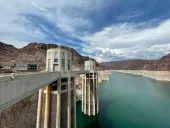Enhancing Energy Resilience for ASEAN: Regional Actions in Post-Pandemic Economic Recovery Plans
By Rizky Aditya Putra, Dynta Trishana Munardy, Alfred GurningSince its earliest infections started cropping up in Wuhan, China, December last year, the COVID-19 coronavirus has been expanding towards approximately 4 million confirmed cases globally. In ASEAN region, based on the data from the World Health Organization (WHO), the confirmed cases have reached almost 300,000 as of early August 2020, which dominantly occurred in Indonesia, Philippines, and Singapore. Most countries, including the ASEAN Member States, have enacted containment measures in order to control and mitigate the spread of the coronavirus particularly after it was officially announced as a pandemic by WHO on March 11, 2020.
The abrupt halt in the world economy is inevitable and the level of uncertainty resulting from this pandemic in the economic context including its impact projection is still considerably high. The collective quarantine order has changed the way the consumers behave, and it also disrupted supply chains as many industries are shutting down and businesses are struggling with lost revenues. As a result, global GDP growth is predicted to shrink. The International Monetary Fund (IMF) projected that the global economy will experience a negative growth rate of nearly 4.8% in 2020, expecting the worst recession since the Great Depression in the 1930s. Moreover, the GDP growth of ASEAN+3 could be reduced from 4.8% in 2019 to zero growth in 2020, estimated by the ASEAN+3 Macroeconomic Research Office (AMRO) in August 2020.
A Glimpse of COVID-19 Impacts in the Energy Sector
The impact of COVID-19 is heavily felt not only in the health and tourism sectors but also in the energy sector. The global energy demand has plummeted by 3.8% in the first quarter of 2020 and predicted to decline up to 6%, the largest ever in absolute terms, according to the Global Energy Review 2020 by IEA.
As highlighted by the ASEAN Centre for Energy in their COVID-19 Energy Insights, the most dominant consequence of this pandemic is the sharp declines in oil demand resulting from the massive travel and commerce restrictions and reduced operations from many industries. Within the ASEAN region, most of AMS’ oil companies foresee revenue loss since some of them have cut their national refinery activities as a response to the drop in the transportation sector. For oil producer countries, such as Brunei Darussalam and Malaysia, the revenue from this sector might be expected to fall, resulting in a significant tension to their overall national finances.
Similar to the oil sector, the decline of coal demand is unavoidable, associated with lower demand in the electricity sector. Although the electricity demand is shifted from the industrial sector to the residential sector, increases in residential demand were outweighed by the massive reductions in commercial and industrial sectors. Malaysia and The Philippines, for example, experienced a drop in electricity demand for approximately 30-45%. However, this does not mean that the effect from the increase in the residential sector was insignificant, especially for the low-income communities who are considered as vulnerable to this pandemic. In some ASEAN countries, the governments provided incentives to ease the electricity bills of these certain vulnerable communities.
In the renewable energy (RE) sector, Global Energy Review 2020 of IEA reported that renewables became the only energy source experiencing a demand growth during this pandemic. However, in the ASEAN region, the economic disruption in China may create supply chain bottlenecks for clean energy technologies, considering China is the main global production source of clean energy technology. Several RE projects in the region are at risk of major delays due to changes in energy markets and safety of the workers, such as what is currently happening in the hydropower dam projects along the Mekong River.
Contemplating the Urgency of Low Carbon Energy through the Pandemic
Economic recovery would be the main priority and focus of the government once the pandemic is under control. As the curve is flattening, it is crucial to think about the best pathway for the energy sector in the economic recovery plans, considering the strong link between the energy sector and economic growth. Moreover, with the growing issues on climate change, the impact of the economic recovery and stimulus plans to energy transition should be considered as well.
The chance of fossil fuels to strike back is still most likely to happen if the government allows massive fossil fuel usage in the industries for their business recovery. Moreover, placing the investment of a carbon-intensive energy system into the economic stimulus packages might be considered as imprudent action which would only lead to the same mistake. An article described the interesting connection of this pandemic to the oil-fuelled global connectivity that dates back to the 19th century. It is also well known that the human’s carbon-based activities have been disrupting the ecological cycles and forcing us to intrude many natural ecosystems which eventually expose us to more unknown pathogens such as the coronavirus.
As the most frequently asked question is on how the COVID-19 pandemic affecting climate change, the short-term emissions reductions resulted from containment measures, has lulled people into a false sense of understanding. In fact, it can lead to further emissions growth when the economies bounce back as shown by what happened during the post-financial crisis in 2008-2009. Therefore, governments should think rigorously on which strategy to take and what type of policies and structural measures to be included in the economic stimulus packages to ensure a long-term secure, sustainable, reliable, and diversified energy system in order to nurture the prosperity of future society.
Regional Actions for the Post-Pandemic Recovery Plans
Observing the broad global range of infections in many sectors caused by this pandemic, the long-term strategic measures in the economic stimulus packages should not only be intended for the good of national restoration but also, the government of each country might need to consider the future challenges on how they will engage with other countries. Thus, the regional level assessment of COVID-19 implications to the energy sector is indeed important.
On 14th of April, 2020 ASEAN Leaders held the Special ASEAN Summit on COVID-19 through video conference to reaffirmed the regional determination and commitment to contain the spread of the coronavirus and also to minimise the impact on our people’s livelihood, our societies and economies. One of the points of the summit is to encourage the development of a post-pandemic recovery plan by exploring the arrangements to preserve supply chain connectivity amongst the ASEAN Member States. Recovering from this current hard time can be a pivotal moment for ASEAN to redirect the priority of the regional energy cooperation and to start moving forward through decarbonisation whilst ensuring energy security and resilience. Structural measures can be done through multilateral efforts particularly to create an enabling investment environment for clean energy, energy efficiency, decarbonisation of fossil fuels, and digital transformation.
Cleaner Energy and Energy Efficiency Pathway
Directing the energy development into a cleaner energy pathway will ensure a long-term secure, sustainable, and diversified energy system. Moreover, it can provide affordable solutions that align with climate targets. By accelerating clean energy deployment and making the clean energy transition an integral part of the recovery, ASEAN can achieve multiple economic and social objectives in the pursuit of a resilient future that leaves nobody behind. Based on 2005 levels, ASEAN has achieved the energy intensity reduction of 24.4% in 2017. Meanwhile, in the RE sector, the region has achieved a RE share of 14.3% in total primary energy supply (TPES) in the same year. The current regional targets for EE and RE are 30% EI reduction and 23% RE Share in TPES by 2025. Significant efforts should be maintained for the region to achieve those targets. In the regional level, the creation of a regional clean energy supply chain should be accelerated to accommodate a higher penetration of renewable energy into the ASEAN Power Grid and ease the regulation of intra-biofuel trade. ASEAN can also strengthen its cooperation by enhancing the regional market of energy-efficient products. As stated by IEA, energy efficiency can boost economies quickly with long-lasting benefits. Investments in RE and EE&C will stimulate job creation in trades and manufacturing which can lead to a more resilient region.
Decarbonisation of Conventional Energy System
In a midst of pressure to reduce greenhouse gas emissions, the COVID-19 pandemic allows us to reflect on how vulnerable the current conventional energy system is. Based on the 5th ASEAN Energy Outlook of ASEAN Centre for Energy, although there will be a significant increase in RE development, the region is projected to still have a high dependency on fossil fuels. Import dependency for oil and natural gas is also estimated to increase. Thus, ASEAN needs to consider strategic measures in transforming the current conventional energy systems to be more environmentally conscious. For example, to increase more deployment of clean coal technology such as High-Efficiency-Low-Emission (HELE) technologies and to explore more research on coal upgrading. Also, ASEAN can develop a stringent coal-fired power plant emission standard to reduce and mitigate the emissions. Moreover, most importantly is the deployment of carbon capture utilisation and storage (CCU/S) which is a key to the realisation of the energy transition to a low carbon system. A good example has been shown during the post-2008 financial crisis in the US, clean energy investments including investment on CCU/S has made up over one-eighth of total American Recovery and Reinvestment Act (ARRA) of 2009 spending and provided a remarkable boost to the economic recovery.
Digital Adoption and Technology Transformation
This pandemic taught us many values on how the digital and emerging technologies can support to minimise the impacts of the pandemic in many sectors. During the 37th ASEAN Ministers on Energy Meeting (AMEM) held in Thailand last year, ASEAN has recognised the importance of digital and emerging technology in energy development including automation, high-efficiency energy systems, and new technologies such as batteries and hydrogen technology. Opening the collaboration with broad partners to respond to the risks and opportunities of digitalisation in the energy sector can benefit ASEAN in the long-term future. Therefore, economic recovery strategies should also include investment in technology transformation.
Leveraging Regional Cooperation in Achieving Energy Resilience
Currently, ASEAN is preparing the new phase of ASEAN Plan of Action for Energy Cooperation (APAEC) which is the APAEC Phase II: 2021-2025. For more than two decades, ASEAN has implemented the APAEC as the regional energy development blueprint. In preparing the strategies to recover from this pandemic, ASEAN can leverage the role of APAEC particularly to accelerate the energy transition and increase the energy resiliency through stronger regional cooperation. The long-term measures to mitigate such unexpected events like this pandemic can be included in the strategies of APAEC Phase II that can be eventually translated into more tangible action plans.
The COVID-19 pandemic is a crisis that we have not anticipated before and it has brought several consequences to ASEAN energy sector. However, ASEAN can overcome this crisis and come back stronger than before. Through the pandemic, ASEAN can enhance their collaboration by embracing evidence-based policies and long-term measures. Therefore, it is necessary for ASEAN to move forward in the spirit of togetherness towards a more resilient region. Will the ASEAN economic recovery plan accelerate the clean energy transition whilst boosting economic growth?




















 Advertise
Advertise






